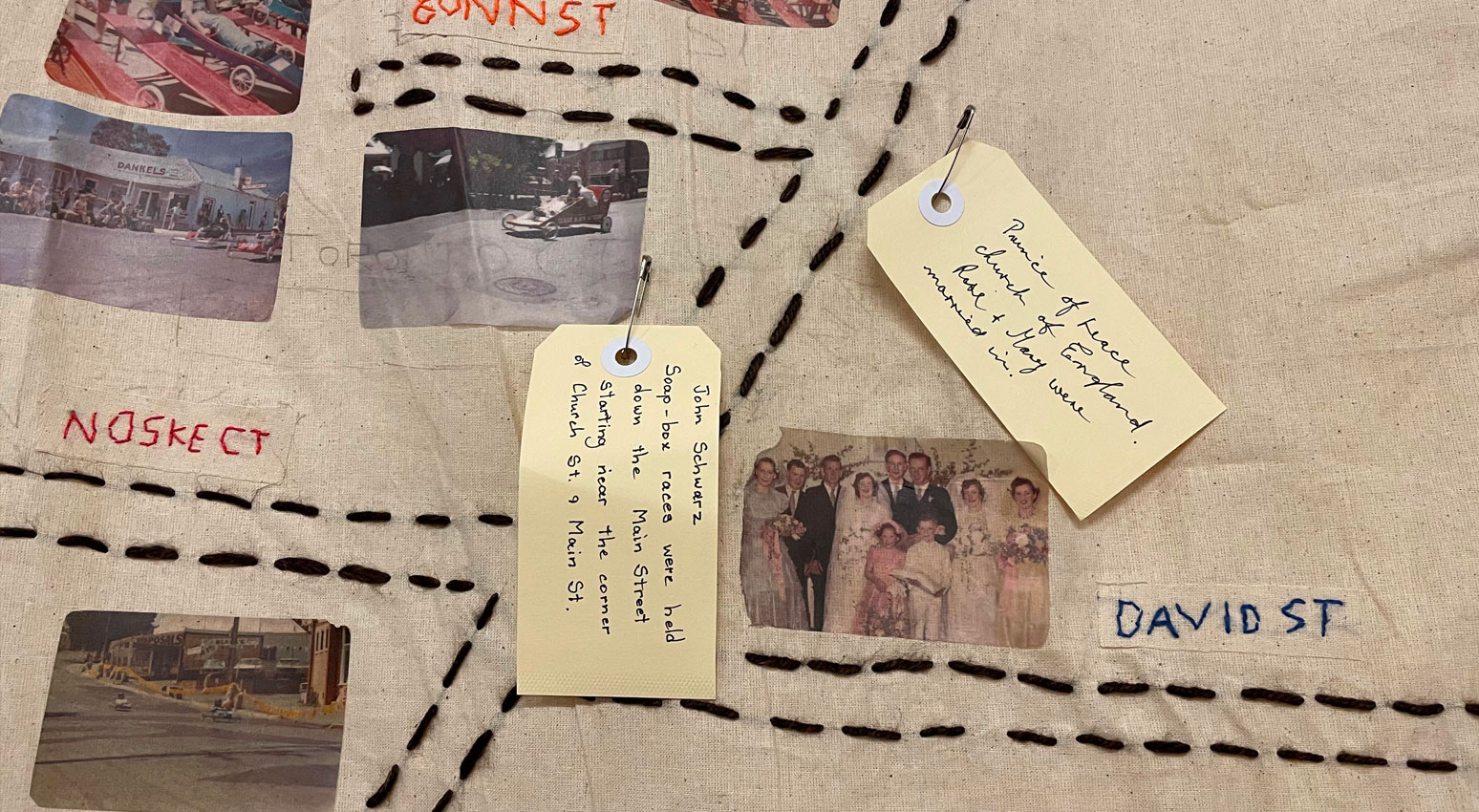Contents
“The arts make recovery more possible, more quickly.” 1
On 19 December 2019, as the Lobethal community was preparing for the peak period of the Lights of Lobethal festival, a tree falling on powerlines during a catastrophic fire day changed everything.
Over 23,000 hectares of land was burnt, more than one hundred houses destroyed and hundreds more properties were damaged, with loss of stock, sheds, vehicles, fencing and livelihoods. An even greater amount of people lost a sense of safety in their beloved Hills environment.
This is the story of a regionally-based arts organisation standing alongside its community, offering creative activity and comfort in the long months after a disaster.
When the fire changed everything
Fabrik is an arts and heritage hub, run by Adelaide Hills Council. Based amongst a thriving industrial site, Fabrik sits nestled within the buildings of the former Onkaparinga Woollen Mill, reflecting the history of the town and its community.
The 2019 Cudlee Creek fire surrounded the town of Lobethal, with fires burning to the edge of Mill Rd, metres behind Fabrik. While the efforts of firefighters protected the old mill site, homes on the hill across the road were lost. By the next morning Fabrik was located in the midst of an extensive fire scar.
Every road into Lobethal passed through a blackened landscape and in these early days, the community, deep in shock, was also trying its hardest to bring some order to the chaos of need and the mountain of donations that soon poured in.
As a newly established arts organisation, Fabrik’s public program had commenced earlier that year, with a remit covering both community and economic development goals.
Knowing the recovery period after such a large fire would be substantial, Fabrik’s staff immediately looked to ways the premises and public program could play a role in supporting the community in its recovery.
The role of the arts in recovery
Understanding the role the arts can play in disaster recovery was a steep learning curve for Fabrik, and research undertaken after other disasters informed the approach taken.2
Fabrik’s intent was to explore ways that the arts could be a tool for people’s recovery, particularly in the following areas:
- Connection: providing a place and activity that allows people to gather and connect, sharing their stories and experiencing as well as offering support.
- Respite: creative activity can be all consuming, and an opportunity for people to gain psychological space from the trauma
- Perspective: using creative practice to process feelings and responses to the trauma can provide an opportunity to see the event through a different lens
- Normality: arts events offer an opportunity for communities to gather joyfully, and also signal that life will one day return to normality.
Fabrik worked closely with the Cudlee Creek Community Recovery Officer, to develop programs and connect with community members. Activities were promoted through recovery networks and offered at no cost to participants.
Funding support from the Cudlee Creek Bushfire Recovery Program and the Government of South Australia as well as Wellbeing SA ensured Fabrik could engage professional artists and pay them appropriately.
When activities interacted explicitly with participants’ recovery experience Fabrik engaged qualified mental health professionals. These skilled professionals were actively involved in the workshop, working in collaboration with the artist, to ensure a psychologically safe environment was maintained for all involved.









